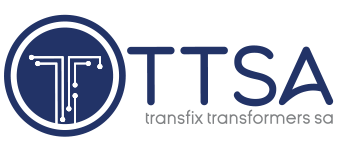(Virtual Showroom): The completion of the solar borehole system in the Roots community, in Brits, located in South Africa’s North West province, spearheaded by pump supplier AxFlow AQS Liquid Transfer, has had a transformative impact on the lives of about 3 000 households. This initiative, backed by various stakeholders, has provided a reliable and sustainable water source, addressing a critical need in the community, marketing manager Melani du Plessis says.
Despite enthusiasm for the development of a hydrogen economy from the public and private sectors, there remains a significant lack of coordination to effectively implement projects and bring the dream of a green hydrogen economy to life, according to energy technology company Mitochondria Energy System CEO and founder Mashudu Ramano. “What I think is necessary, is a coordinated effort throughout the various government entities and departments to have a single sort of point of contact coordinating these developments,” he said during a webinar hosted by Creamer Media earlier this month.
The removal of the licensing threshold for embedded generation has boosted the renewable-energy market by allowing private-sector companies to procure energy directly from independent power producers (IPPs) and thereby facilitating greater investment across the renewable-energy landscape, says financial services company Nedbank Corporate and Investment Banking (CIB). The company highlights that it will continue to scale up its historical commitment towards the renewable-energy sector, in line with the need to support socioeconomic development objectives while driving the transition to a zero-carbon energy system, thereby also advancing energy security and affordability.
Real estate investment company Fortress Real Estate Investments Limited (Fortress) continues to invest significantly in renewable-energy and green technologies to achieve its ambitious energy security strategy and decarbonisation targets. Data released in the company’s financial report for the year ended June 30, shows that Fortress has invested a total of R337.9-million in its solar roll-out programme to date, which has enabled it to generate 22 180 MWh of the 246 141 MWh the company consumes each year.
In South Africa, solar and wind are viable and established energy sources, notes digital automation and energy management company Schneider Electric. Unfortunately, it is limited to when the sun is shining, and the wind is blowing, which is why energy storage forms such an important part of the energy generation infrastructure. In exploring the variability of solar in the US state of California, energy producers have observed a trend now referred to as the “Duck Curve”. In essence, the Duck Curve observes a drop in net load (or the demand remaining after subtracting variable renewable generation) in the middle of the day, when solar generation tends to be highest.
South Africa’s disproportionate reliance on coal for electricity generation is poised to add further upward pressure on tariffs by exposing local businesses to carbon taxes that could make up over 35% of their electricity costs by 2034. This finding is contained in research conducted by Discovery Green in partnership with EY’s Africa Sustainability Tax division, which Discovery Green head Andre Nepgen says points to there being significant cost implications for those South African businesses subject to carbon tax.
Despite welcome relief from loadshedding in South Africa, a total of 3.3 GW of renewable energy projects were registered with the National Energy Regulator of South Africa (Nersa) this year, with more than 2 GW registered in the third quarter alone. Analysis conducted by Gaylor Montmasson-Clair, senior economist at Trade and Industrial Policy Strategies, indicates that the surge in registrations during the quarter, from 606 MW in the first quarter and 732 MW in the second, could be attributed to a few large projects.
State-owned utility Eskom has urged prepaid electricity customers to recode their meters by November 24, as required by the Standard Transfer Specification Association. After this deadline, meters will no longer accept electricity tokens unless they are updated to Key Revision Number 2.
As electricity in South Africa transitions to a more open market-driven system, it has many implications for the electricity distribution industry, particularly municipalities, with stakeholders working on a reform roadmap for the distribution industry to ensure municipalities remain financially sustainable. National Energy Regulator of South Africa (Nersa) electricity regulation interim executive manager Welile Mkhize noted during an address at the Association of Municipal Electricity Utilities convention on October 21, that many metropolitans and municipalities were facing volumetric risk with electricity revenues given the current structure of their tariffs.
The South African government is considering far-reaching changes to the way public procurement of independent power producer (IPP) generation capacity is being carried out so as to accelerate deployments in a way that navigates the country’s prevailing grid constraints, while also creating the certainty needed to support green industrialisation. The changes were considered necessary to facilitate the procurement of some 10 GW of additional renewables capacity covered by the Ministerial determinations issue to enable procurement, including capacity available for re-allocation from previous bidding rounds where projects were either not selected or did not advance to construction.
INDUSTRY NEWS
- NERSA appoints Electricity Market Advisory Forum to guide power-market reformDecember 19, 2025 - 2:04 pm
- Eskom offers more details on envisaged roles of the NTCSA and the TSODecember 18, 2025 - 11:04 am
- NTCSA says any electricity deal to salvage Mozal must ensure its financial sustainabilityDecember 17, 2025 - 3:01 pm
WHERE TO FIND US
Address
9 Yellow Street
Botshabelo Industrial Area
Botshabelo, Free State
Call / Email Us
Tel: +27 (0) 61 956 6772
Email: info@transfix.co.za
